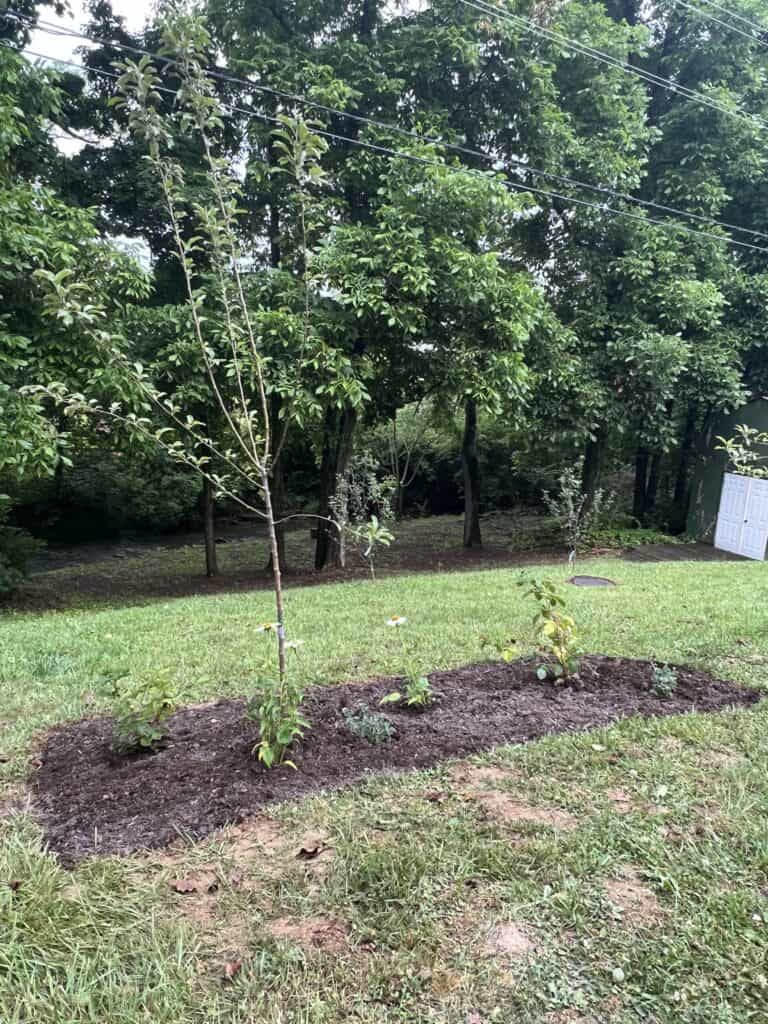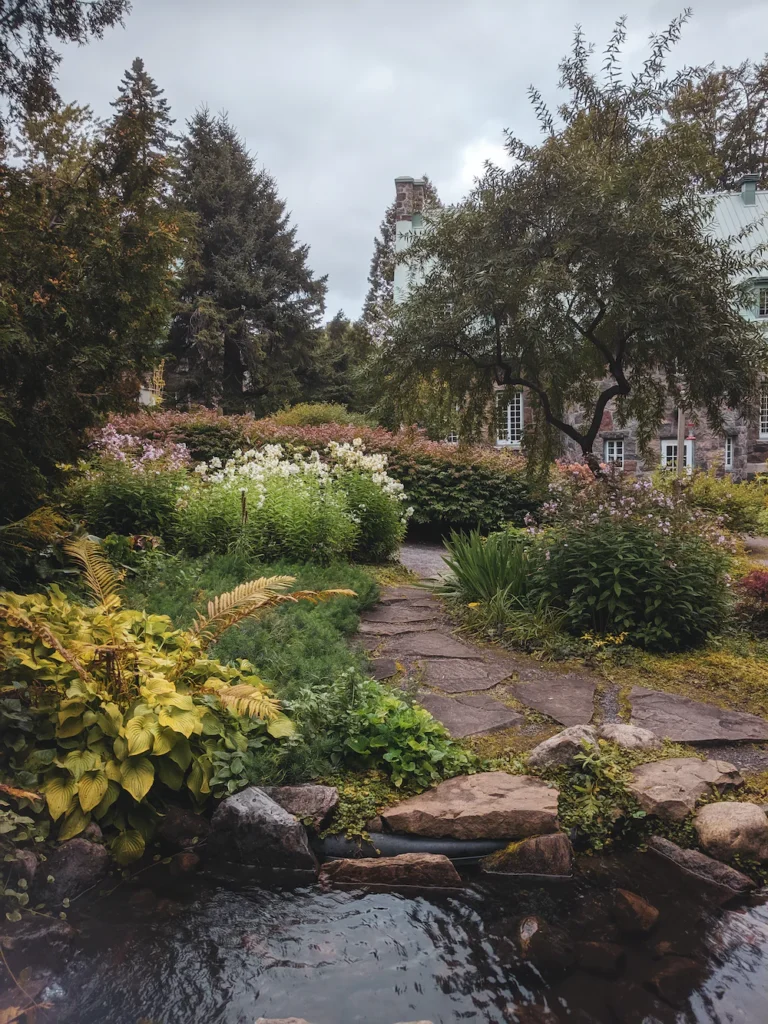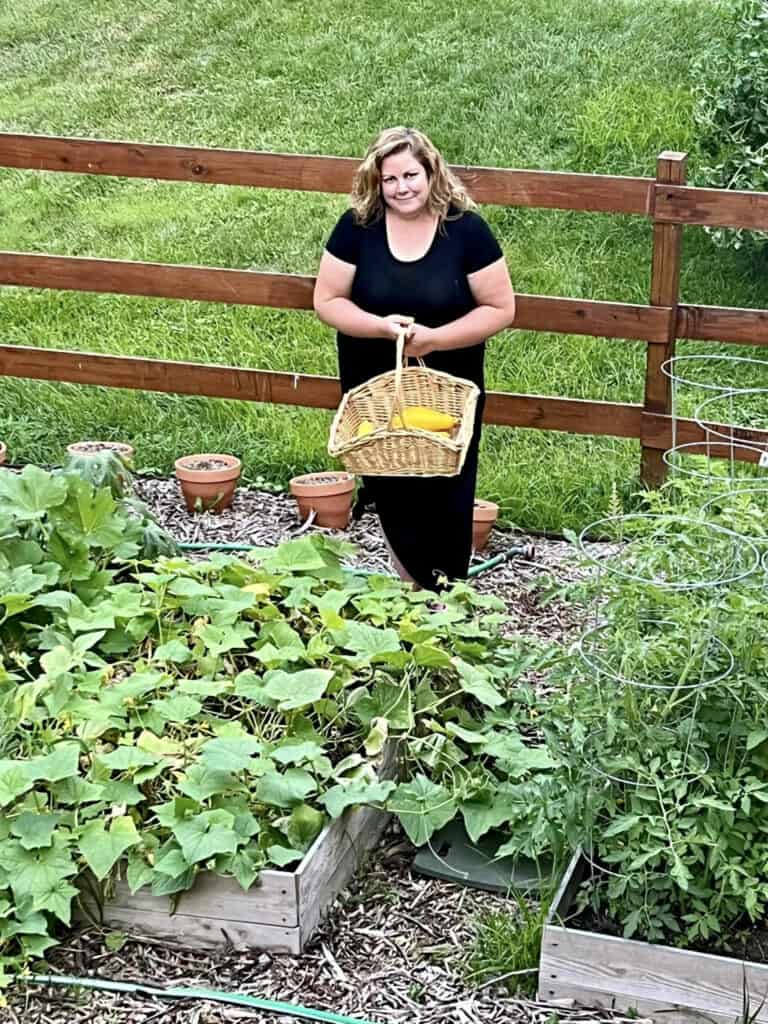How to Plant a Fruit Tree Guild
Last spring, my husband and I decided to plant an orchard on our useless hill. You can read all about it here. We ended up with eight fruit trees, and eventually all of them will have an accompanying fruit tree guild. I’m finally ready to unveil the first, our apple tree guild.
What is a Fruit Tree Guild?
A fruit tree guild is a harmonious and sustainable planting strategy in permaculture that centers around a fruit-bearing tree as the focal point. In this ecological approach, various companion plants, herbs, and shrubs are carefully chosen and strategically planted around the fruit tree to create a mutually beneficial ecosystem. Each component of the guild plays a specific role: nitrogen-fixing plants enrich the soil, pest-repelling herbs protect against pests, ground cover plants suppress weeds, and dynamic accumulators help with nutrient cycling. By carefully selecting and arranging these companion plants, a fruit tree guild maximizes soil fertility, minimizes competition, and fosters a resilient, self-sustaining mini-ecosystem that enhances the health and productivity of the fruit tree while reducing the need for external inputs like pesticides or fertilizers. If you’d like to learn more about tree guilds, you can read this post.

The Fruit Tree Guild Design
I decided to do a rectangular shaped guild for my first one. In hindsight, I wish I would’ve lined it up better with the next tree so they could be more easily connected. Here are the plants I chose to companion plant with my Granny Smith apple tree:
Blackberry Bushes
My local nursery provided me with a variety of blackberry bushes that will thrive in my growing zone. (If you need to find out your growing zone, you can find it here.) Companion planting apple trees with blackberry bushes provides a mutually beneficial relationship: the apple trees offer structural support and shade to the blackberries, while the blackberries act as a natural mulch, suppressing weeds, and attracting pollinators, ultimately enhancing the overall health and productivity of both plants. I placed one blackberry bush on each side of the tree.
Oregano
Oregano is a beneficial companion plant for apple trees because its aromatic leaves can deter apple tree pests, while its shallow root system doesn’t compete for resources with the apple tree. I chose one large oregano plant for this project.
Echinacea
Companion planting echinacea with apple trees can enhance the overall ecosystem by attracting beneficial pollinators and predatory insects, which helps improve apple tree pollination and control potential pests. Echinacea are perennial plants and will return each year.
Marigolds
Companion planting marigolds with apple trees can deter common apple pests like aphids and nematodes due to their natural pest-repellent properties. Additionally, their vibrant blooms attract pollinators, aiding in apple tree pollination and potentially increasing fruit yield. I planted several marigold seedlings around the tree, and they have gotten absolutely enormous. I’ve really enjoyed seeing the bees and butterflies covering them. Marigolds are not perennial plants, but they tend to aggressively reseed themselves. I’m hoping for more next year without manual intervention.
Red Clover
Companion planting red clover with apple trees enriches the soil by fixing nitrogen, providing a natural source of fertility and supporting the apple tree’s nutrient needs. Additionally, red clover serves as a living mulch, reducing weed competition and improving moisture retention around the apple tree’s roots.
How to Plant a Fruit Tree Guild
Because grass competes with other plants for nitrogen, I decided to first remove all of the grass surrounding my apple tree. Because we were in the middle of a drought, this proved to be a larger task than I anticipated. Trying to remove sod in extremely dry ground is almost impossible so I grabbed the hose and saturated the ground for a few minutes. Doing this made a muddy mess but made the sod much easier to remove. I used a sharp, flat-edged shovel and cut out the shape I wanted. Then I used my hands and a LOT of elbow grease to remove the sod in strips.
Once all of the grass was removed I added some fresh compost and a bag of organic potting soil. Our soil in the bluegrass state can be very clay-filled and I felt that supplementing it would be helpful. Then I planted all of my bushes, herbs and seeds. Finally, I watered everything heavily.

This was my fruit tree guild just after planting. It was a little sparse and wasn’t very much to look at.

But after just a few weeks, it has grown to an incredibly lush and beautiful spot in our yard!

The marigolds have grown so large and all of the plants just seem so happy. Can you spot the bumblebees in the photo below?

Our family has traveled a lot this summer so I have one guild, but eight trees. I have time to get one more guild planted before winter, and the rest of the guilds will need to wait until spring. What should I plan for my next guild? Raspberries? Lavender? The possibilities are endless!
By the way, have you received my free garden planning guide? Add your email address below to receive it instantly to your inbox!






